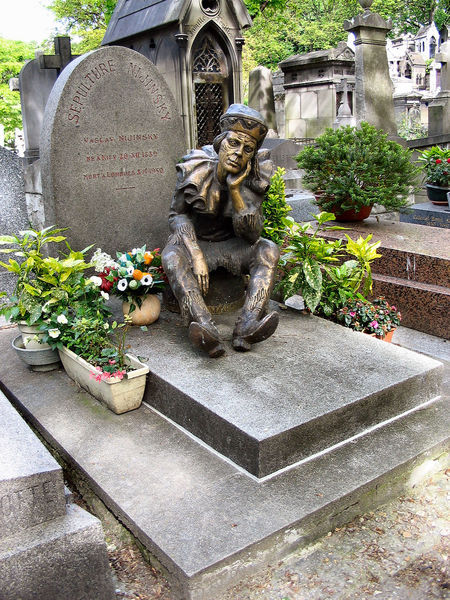Nijinsky was a Russian ballet dancer and choreographer of Polish descent. Nijinsky was one of the most gifted male dancers in history. His ability to perform seemingly gravity-defying leaps was legendary. Nijinsky was born in
 Nijinsky met Sergei Diaghilev, a celebrated and highly innovative producer of ballet and opera as well as art exhibitions, who concentrated on promoting Russian visual and musical art particularly in
Nijinsky met Sergei Diaghilev, a celebrated and highly innovative producer of ballet and opera as well as art exhibitions, who concentrated on promoting Russian visual and musical art particularly in
 Nijinsky met Sergei Diaghilev, a celebrated and highly innovative producer of ballet and opera as well as art exhibitions, who concentrated on promoting Russian visual and musical art particularly in
Nijinsky met Sergei Diaghilev, a celebrated and highly innovative producer of ballet and opera as well as art exhibitions, who concentrated on promoting Russian visual and musical art particularly in Then, Nijinsky went back to the Mariinsky Theatre, but was dismissed for appearing on-stage during a performance as Albrecht in Giselle wearing tights without the modesty trunks, obligatory for male dancers in the company. The Dowager Empress, Maria Feodorovna, complained that his appearance was obscene, and he was dismissed. It is probable that the scandal was arranged by Diaghilev, in order that Nijinsky could be free to appear with his company in the west, where many of his projects now centered around him. He danced lead roles in Fokine's new productions Le Spectre de la Rose, and Igor Stravinsky's Petrouchka, in which his impersonation of a dancing but lifeless puppet was widely admired.
roles in Fokine's new productions Le Spectre de la Rose, and Igor Stravinsky's Petrouchka, in which his impersonation of a dancing but lifeless puppet was widely admired.
 roles in Fokine's new productions Le Spectre de la Rose, and Igor Stravinsky's Petrouchka, in which his impersonation of a dancing but lifeless puppet was widely admired.
roles in Fokine's new productions Le Spectre de la Rose, and Igor Stravinsky's Petrouchka, in which his impersonation of a dancing but lifeless puppet was widely admired.Nijinsky took the creative reins and choreographed ballets. His ballets were L'après-midi d'un faune (The Afternoon of a Faun, based on Claude Debussy's Prélude à l'après-midi d'un faune) (1912), Jeux (1913), Till Eulenspiegel (1916) and Le Sacre du Printemps (The Rite of Spring, with music by Igor Stravinsky) (1913). Nijinsky created choreography that exceeded the limits of traditional ballet and propriety. For the first time, his audiences were experiencing the futuristic, new direction of modern dance. The radically angular movements expressed the heart of Stravinsky's radically modern scores. Nijinsky's new trends in dance caused a riotous reaction at the Théâtre de Champs-Elysées when they premiered in 

In 1913, Diaghilev’s Ballets Russes toured
During World War I, Nijinsky was interned in .jpg?0.25005631316155113)
.jpg?0.25005631316155113)
Nijinsky had a nervous breakdown in 1919, and his career effectively ended. He was diagnosed with schizophrenia and taken to 

While immortalized in numerous still photographs, no film exists of Nijinsky dancing. Diaghilev never allowed the Ballets Russes to be filmed. He felt that the quality of film at the time could never capture the artistry of his dancers and that the reputation of the company would suffer if people saw it only in short jerky films. However, recently films have in fact surfaced out of the former Soviet Union!


No comments:
Post a Comment